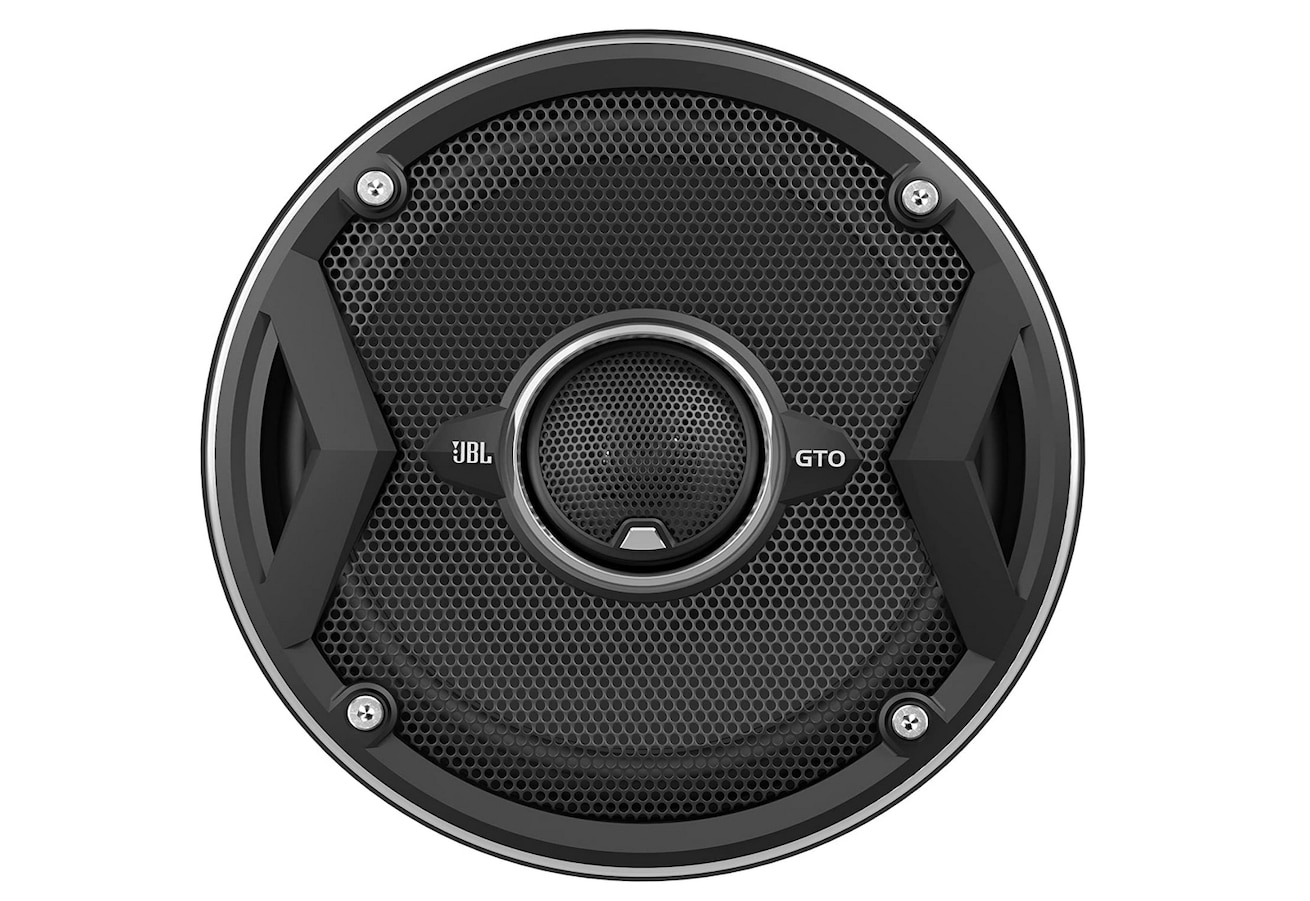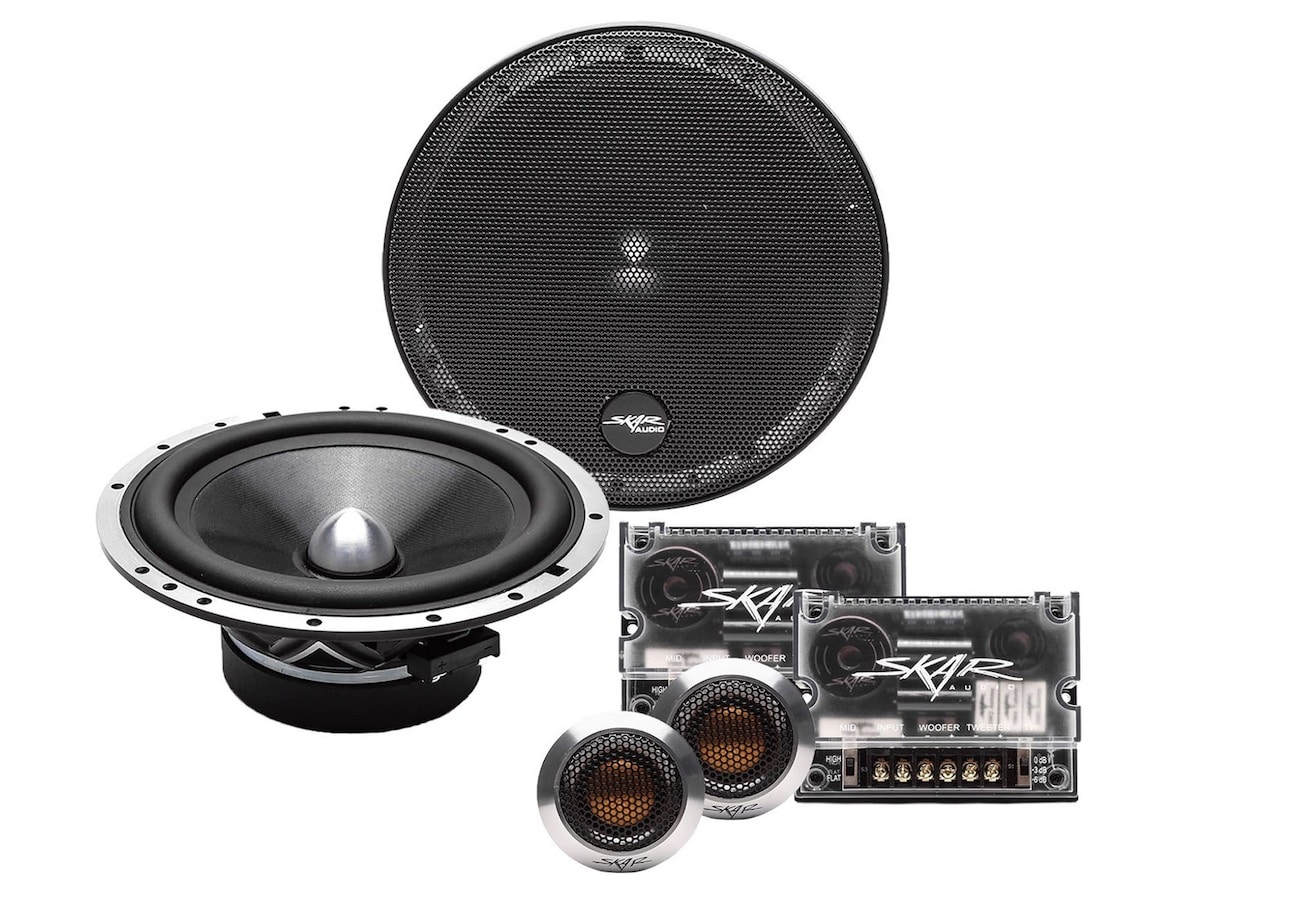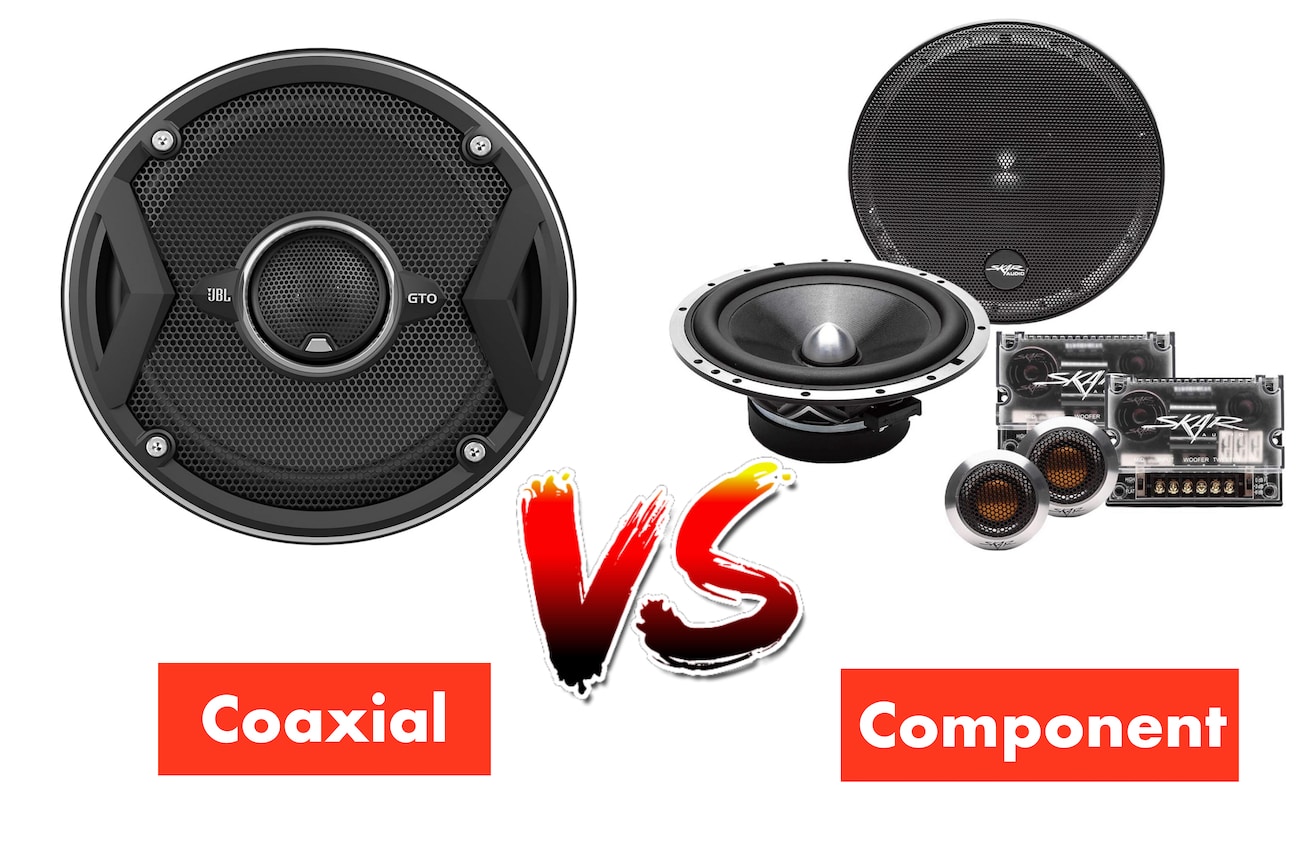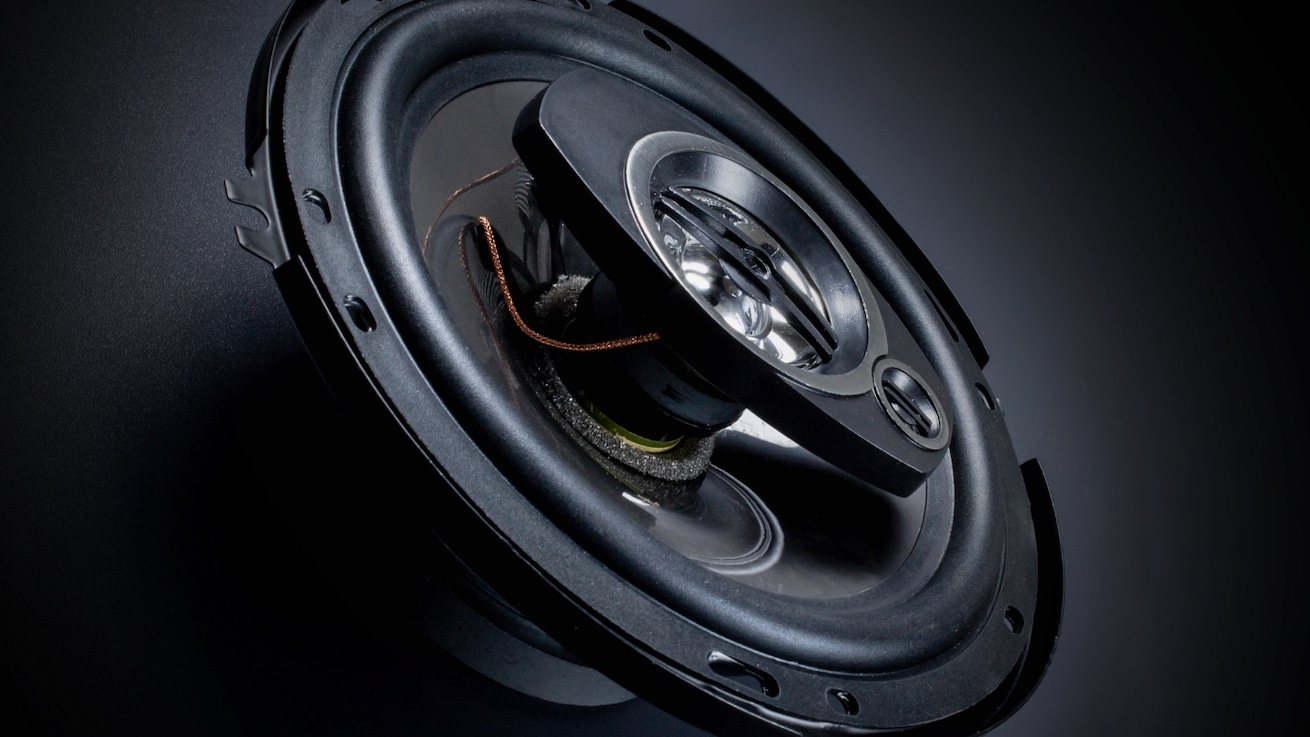Component Speakers vs Coaxial Speakers – The Ultimate Guide
When it comes to upgrading your cars system you’ll need to decide between component speakers vs coaxial speakers. The main differences, between the two lie in their design and sound quality. Component speakers are designed with tweeters, woofers and crossovers which allows for better sound imaging and separation. Coaxial speakers combine all these components into one unit making them easier to install and more budget friendly.
However it’s important to note that while coaxial speakers are more convenient in terms of installation and cost effectiveness they may not offer the level of clarity and depth as component speakers. It ultimately depends on your preferences and priorities when it comes to performance and installation.
There are advantages and disadvantages, to both types so it’s important to understand their differences before making a decision. In this article we’ll explore the characteristics of component speakers and coaxial speakers discuss their strengths and weaknesses and help you determine which type might be more suitable for your needs.
Coaxial Speaker Overview

Coaxial speakers often have quality due to factors such as limited space, for individual components and compromised design. This can lead to reduced power handling capability and overall audio performance when compared to component speakers.
Moreover, coaxial speakers may have limitations in terms of response accuracy, which can impact the sound quality. Therefore if you’re looking for high fidelity audio reproduction and an immersive listening experience component speakers are generally considered the choice.
What is a Coaxial Speaker?
Coaxial speakers, also referred to as full range speakers are commonly chosen for factory installed car audio systems. These speakers are designed to reproduce a range of frequencies from deep bass notes to high tones.
A typical coaxial speaker consists of a woofer and a tweeter mounted together. The woofer handles the frequencies while the tweeter is responsible for producing the frequencies.
How do coaxial speakers function?
A coaxial speaker functions by integrating the woofer and tweeter into one unit. This design allows for a convenient installation since all the necessary components are contained within a single speaker.
The woofer is usually positioned at the center of the speaker cone while the tweeter is placed in the middle or, on top of the woofer.Coaxial speakers offer a faithful reproduction of sound by emitting sound waves from the same point, in space for both the woofer and tweeter.
This eliminates any issues with phase or time delays that can arise when using woofers and tweeters. Moreover combining both drivers into an unit enhances the width of the soundstage. Improves overall imaging resulting in a more immersive listening experience.
What are the benefits of using coaxial speakers?
Coaxial speakers come with advantages. Firstly they are relatively easy to install compared to component speakers. Since all components are integrated into one unit you don’t have to worry about mounting tweeters in locations.
In addition, coaxial speakers are often more affordable than component speakers making them a popular choice for those who’re mindful of their budget while still seeking quality car audio. Furthermore coaxial speakers strike a balance between convenience and sound quality.
What are the drawbacks of using coaxial speakers?
Despite their benefits there are some limitations to consider when using speakers. One main drawback is that they may not deliver the level of precision as component speakers. The placement of the tweeter on top of the woofer can result in accuracy, in sound reproduction and less precise stereo imaging.
Coaxial speakers have options, for customization as individual components cannot be easily upgraded or replaced. Some coaxial speakers, also known as cone speakers use materials like paper or plastic for the tweeter, which can affect the sound quality.
Additionally, coaxial speakers may struggle with handling power levels. Might not be as durable as component speakers. This makes them more susceptible to distortion and damage over time.
Component Speaker Overview
 Component speakers are comprised of tweeters, woofers and crossovers. They are designed to deliver quality and offer more flexibility for customization. Car audio enthusiasts often prefer component speakers to achieve the sound reproduction in their vehicles.
Component speakers are comprised of tweeters, woofers and crossovers. They are designed to deliver quality and offer more flexibility for customization. Car audio enthusiasts often prefer component speakers to achieve the sound reproduction in their vehicles.
Component speaker systems typically include a pair of tweeters that can be positioned higher for improved imaging. The woofers in these systems are larger and more powerful compared to those found in speakers.
The separate crossovers in component systems ensure that each speaker receives the frequencies resulting in a balanced and accurate sound reproduction.
In summary the main distinction, between component speakers and coaxial speakers lies in how their various components separated. In a component speaker system the tweeters, woofers and crossovers are installed individually.
The tweeters can be positioned in a way that optimizes the dispersion of sound while the woofers are typically placed in areas, like door panels or other car parts. The crossovers ensure that specific frequencies are directed to the speakers.
What benefits do component speakers offer?
Component speakers provide advantages over speakers. Since the components are separate, component systems allow a full range sound reproduction. Placing the tweeters at ear level enhances the listening experience while optimizing the woofers for bass performance.
Component speakers also offer flexibility in terms of speaker placement. Can be easily upgraded or replaced without having to change the entire system. Moreover, they generally produce quality sound due to their power ratings.
What drawbacks do component speakers have?
There are a downsides to consider when it comes to component speakers. Firstly they tend to be more costly compared to speakers especially when factoring in components, like crossovers.
Installing component subwoofers can also be more challenging and time consuming as it involves routing wires and mounting separate speakers in locations. In addition it’s worth noting that component speakers may require the use of an amplifier in order to effectively power them.
Component or Coaxial Speakers: Which is the Better Option?
 Choosing between car speakers ultimately depends on your needs and preferences. If you value installation, affordability and a good balance between quality and convenience then coaxial speakers might be the better choice for you.
Choosing between car speakers ultimately depends on your needs and preferences. If you value installation, affordability and a good balance between quality and convenience then coaxial speakers might be the better choice for you.
On the hand if you prioritize achieving the level of sound quality, greater customization options and are willing to invest more time and money into your car stereo system then component speakers could be the way to go.
When it comes to quality, a component system generally offer a superior listening experience compared to coaxial speakers. The separation of tweeters and woofers in component speakers enables imaging and more accurate frequency reproduction.
The dedicated tweeters and woofers in component speakers allow for separation of frequencies from low frequencies resulting in a more immersive and detailed listening experience.
Do I need an amplifier, for my component speakers?
It is often recommended to add an amplifier in order to fully unleash the potential of these speakers. By using an amplifier you can provide the power for component speakers to accurately reproduce a range of sounds.
This helps achieve quality without any undesirable frequencies. Component speakers tend to produce a higher quality sound when they are used together with an amplifier.
Significance of Crossovers In Both: Coaxial And Component Speakers
Crossovers play a role in speaker systems in setups that involve car speakers. They ensure that each speaker receives the frequencies it is designed for. The main function of a crossover is to divide the signal into frequency bands and direct them towards specific drivers like tweeters and woofers.
This allows each speaker to focus on reproducing its designated range of frequencies. By dividing this labor sound quality improves significantly while preventing distortion.
Component speaker crossovers come in two types: active and passive. Passive crossovers are typically included with component speaker sets. Are installed between the amplifier and the speakers themselves. They employ capacitors, inductors and resistors to divide the signal accordingly.
Active crossovers require a power source and offer more flexibility when it comes to adjusting frequency division. This allows for control, over how different frequency bandsre distributed among various drivers. Both types of speaker setups, component and coaxial play a role, in optimizing the performance of car audio systems.
Choosing Between Component And Coaxial Speakers
 When deciding between component and coaxial speakers there are factors to take into account. Component speakers are renowned for their quality and offer more customization options. They consist of woofers, tweeters and crossovers allowing for sound imaging and separation.
When deciding between component and coaxial speakers there are factors to take into account. Component speakers are renowned for their quality and offer more customization options. They consist of woofers, tweeters and crossovers allowing for sound imaging and separation.
This means that each speaker can handle frequencies resulting in a well balanced and accurate audio experience. On the hand, single cone speakers are more practical and easier to install. They come as a single unit with the tweeter mounted on top of the woofer.
While they may not offer the level of quality or customization as component speakers do coaxial speakers provide a more budget friendly solution for those who want to upgrade their car audio system without extensive modifications.
If your main focus is on quality and you’re willing to invest time and money in installation component speakers are the choice. However if convenience and affordability are what you prioritize most then coaxial speakers would be an option.
What is your intended purpose, for these speakers?
Think about how you plan to utilize your car audio system. If you’re someone who primarily enjoys listening to music and desires the audio quality component speakers might be the more suitable option. However if your car audio system is mainly used for spoken word content, like podcasts or audiobooks coaxial speakers should be sufficient.
Overall coaxial speakers sound cheap and they are viewed in the industry as lower quality speakers. The component speaker systems have better stereo imaging and higher power ratings. Overall, the best speaker system on the market right now is the component system.
What is the range of frequencies that these speakers can handle?
It’s important to consider the response of the speakers you’re considering. Component speakers generally offer a range compared to coaxial speakers allowing for more accurate reproduction of various musical instruments and vocal ranges.
If you have a passion for high quality audio or enjoy a range of music genres component speakers will deliver a fulfilling listening experience. You can expect better sound quality out of a component speaker.
Unlike coaxial speakers, the competent speakers tend to filter out those unwanted sound frequencies located at the bottom of the frequency range. They come equipped with an external crossover that allows you to setup the speaker connector terminals with ease.
Tweeter materials in Coaxial or Component Speakers
When it comes to materials, component speakers deliver much better quality compared to other specific speakers. Coaxial speakers tend to have tweeters that are usually made from materials like paper or plastic resulting in sound quality.
Component speakers often come equipped with tweeters made from higher quality materials such, as silk, polypropylene or even metal. These materials are specifically designed to produce more precise high frequency sounds resulting in an more detailed audio experience.
When it comes to car audio systems having a separate tweeter system, in component speakers can greatly improve the placement and distribution of frequency sounds throughout your vehicle. This ensures an performance compared to coaxial tweeters.
Conclusion
Coaxial car speakers are often more compact and easier to fit into factory speaker locations making them a practical option if you have limited space or don’t want to modify your vehicles interior.
Component speakers sound quality is much higher than the coaxial speakers. The installation process on both of these speakers is totally different and they require a certain level of expertise to do so.
Ultimately the decision boils down to preferences regarding quality and ease of installation. Fortunately there are plenty of options that cater to preferences. Upgrading your car sound system, with high quality speakers can truly elevate your listening experience.
Last Updated on: March 16, 2025

